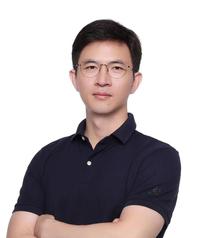
Brief CV:
Xiaochun Lai is an expert in developing various wideband semiconductor detectors, electronics, and imaging systems for biomedical applications. Dr. Lai joined ShanghaiTech University as a tenure-track assistant professor. He is directing the Photonic Sensing and Imaging lab (PSI-Lab) at School of Biomedical Engineering. Before moving back to China, he was a senior scientist at Canon Medical Research USA, where he carried out research and development of photon-counting detectors for the next generation spectral CT. Before that, Dr. Lai was the Gordon Research Fellow at Harvard Medical School and MGH, where he developed a static CT system for space missions and advanced imaging reconstruction for cardiac applications. During his Ph.D. studies (2011-2016) at the University of Illinois at Urbana-Champaign, he developed energy-resolved photon-counting detectors and hybrid imaging systems, SPECT/MRI, for neuron stem cell tracking studies. He got a B.S degree from the University of Science and Technology of China in 2010.
Research Interests:
Semiconductor detector & readout ASIC for biomedical imaging, such as hybrid nuclear molecular imaging and the next generation spectral CT, i.e., photon counting CT.
Courses:
Services to External Academic Communities:
Invited Reviewer for IEEE Transactions on Medical Imaging, IEEE Transactions on Radiation and Plasma Medical Science, IEEE Transactions on Nuclear Sciences, IEEE Transactions on Imaging Processing, Physics in Medicine and Biology, Medical Physics, et al.
Publications:
Semiconductor & Hybrid Imaging Systems:
X. Lai et al., “Design, Performance Evaluation, and Modeling of an Ultra-High Resolution Detector Dedicated for Simultaneous SPECT/MRI”, IEEE Transactions on Radiation and Plasma Medical Science, 2021.
Ultra-high Spatial Resolution Detectors and Compound Eye Gamma Cameras:
L. J. Meng, X. Lai, and E. M. Zannoni, “Gamma Camera for SPECT Imaging and Associated Methods”, U.S. Patent No.16/580711, 2020.
X. Lai et al., “System Modeling and Evaluation of a Prototype Inverted-Compound Eye Gamma Camera for the Second Generation MR Compatible SPECT”, Nuclear Instruments and Methods in Physics Research Section A, 2019.
X. Lai and L.J. Meng, “Simulation Studies of Inverted Compound Eye for Second Generation MRI Compatible SPECT Imaging”, Physics in Medicine and Biology, 2018.
Photon Counting X-Ray detectors and Computed Tomography:
X. Lai et al., “Signal Generation in Semiconductor Detector for Photon Counting CT”, invited book chapter for “Spectral, Photon Counting Computed Tomography: Technology and Applications” published by CRC Press, 2020.
X. Lai et al., “X-Ray CT Apparatus With Adaptive Photon Counting Detectors”, U.S. Patent, N0.16/920034, 2020.
X. Lai et al., “Modeling Photon Counting Detector Anode Street Impact on Detector Response”, IEEE Transactions on Radiation and Plasma Medical Science, 2020.
Lab Introduction:
Photonic Sensing and Imaging Lab focuses on developing varied semiconductor detector, readout ASIC, biomedical imaging systems, and reconstruction algorithms for early diagnosing cancer, brain disorders, and cardiac diseases; assessing patients' responses to therapies; and determining efficacy of new drugs. We are working on the following aspects:
Developing semiconductor detector that can detect x-rays and gamma-rays with higher efficiency, better spatial, energy, and timing accuracy;
Innovating imaging system design and instrumentation that can leverage the potential of semiconductor detector and can efficiently acquire multiple parametric information, such as simultaneous SPECT/MRI;
Developing system modeling & imaging reconstruction that can utilize every detected x-ray or gamma-ray.


